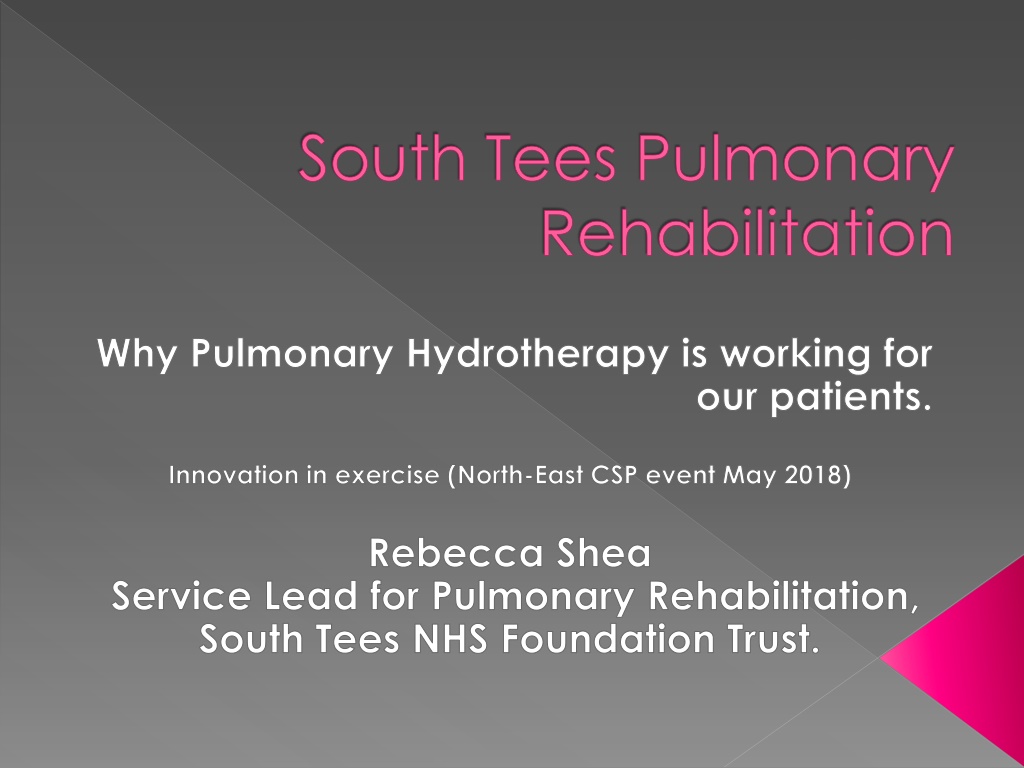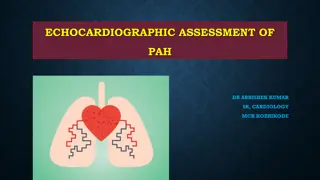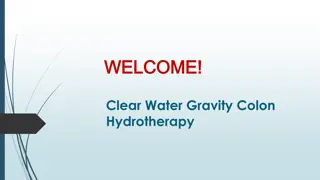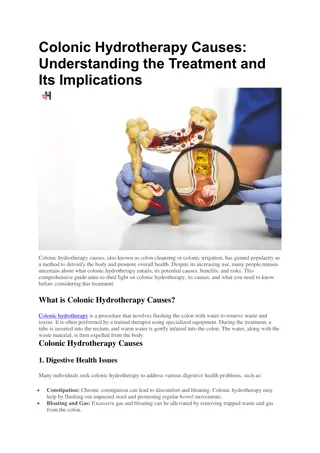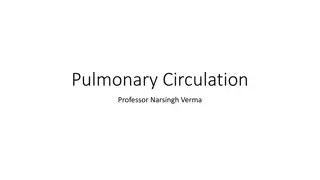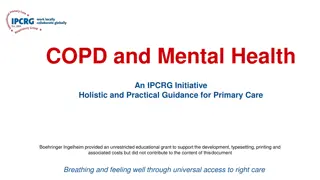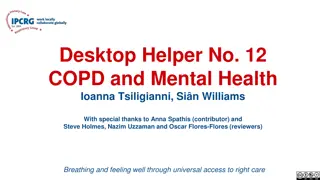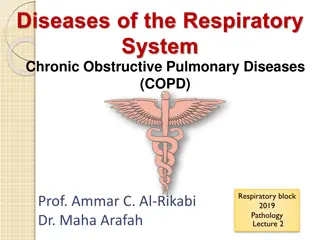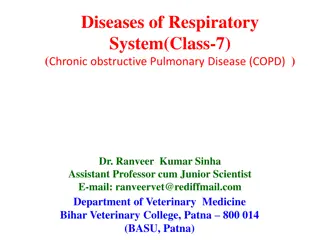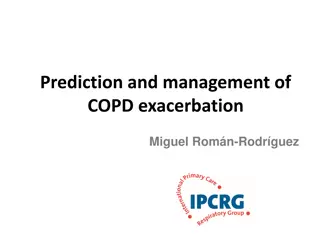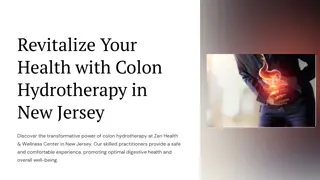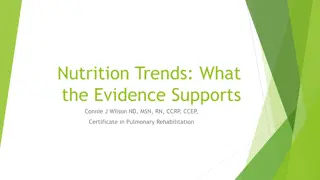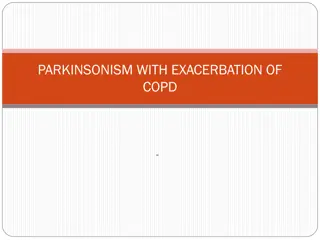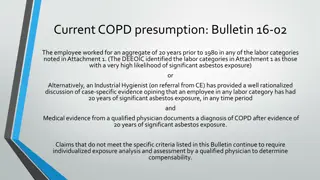Pulmonary Hydrotherapy: Innovation in Exercise for COPD Patients
Pulmonary hydrotherapy is being explored as a safe and effective form of exercise for COPD patients, challenging previous beliefs about water-based activities. South Tees Pulmonary Rehabilitation Service is examining the benefits of hydrotherapy in improving exercise capacity and quality of life, backed by research and pilot programs. The service has shown promising outcomes including increased patient satisfaction and positive impacts on physical and mental health measures.
Uploaded on Sep 10, 2024 | 1 Views
Download Presentation

Please find below an Image/Link to download the presentation.
The content on the website is provided AS IS for your information and personal use only. It may not be sold, licensed, or shared on other websites without obtaining consent from the author. Download presentation by click this link. If you encounter any issues during the download, it is possible that the publisher has removed the file from their server.
E N D
Presentation Transcript
South Tees Pulmonary Rehabilitation Why Pulmonary Hydrotherapy is working for our patients. Innovation in exercise (North-East CSP event May 2018) Rebecca Shea Service Lead for Pulmonary Rehabilitation, South Tees NHS Foundation Trust.
Background to the service Recently expanded Pulmonary Rehabilitation service Covers a large catchment area within South Tees region Number of different lung pathologies treated MRC 2-5, diverse variety of patient ages Small Domicillary home visit service Established service that has evolved over past 20 years
The idea and the development of a pilot Team discussion- why do some of our patients struggle/drop out of land-based programmes? Hydrotherapy resources available within South Tees to trial. Supportive managers. The completion of a risk assessment!
Evidence In the past, water-based exercise had been thought unsafe for people with COPD because of potential increases in cardiac and respiratory work with increased chest wall pressure resulting from water immersion(Arborelius 1972). There is some research that has been done There is limited quality evidence that water-based exercise training is safe and improves exercise capacity and quality of life in people with COPD immediately after training (McNamara et al., 2013). Perk (1996) found that a single head out of water exercise session in water can be performed safely without adverse events and with maintenance of oxygen saturation even in those with severe disease.
Evidence The for and against argument continues There is controversy in the literature regarding the beneficial and harmful effects of water exercise for the respiratory system in people with respiratory problems. Studies have shown that hydrostatic pressure exerts resistance against inspiratory muscle strength and limits chest expansion (Frontera, Herring, Micheli, & Silver,2008) On the otherhand, patients with chronic obstructive pulmonary disease may benefit from the hydrostatic pressure exerted during immersion, which facilitates expiration (Schoenhofer et al., 2004)
Outcomes 6 minute walk CAT TEST PHQ-9 GAD 7 trial Patient satisfaction
Innovations and Developments TV- LOCAL NEWS! CSP publication Visits/networking with other professions in our own Trust and other UK Trusts NHS bright ideas application and subsequent positive feedback Currently we are collecting data and auditing any admissions or re-admissions to JCUH in a 12 month period (post-course).
Future thoughts/ideas For South Tees: Increase in slots in the hydro timetable or a twice weekly option. This would enable us to roll the programme out to more people whilst keeping a low waiting list. Also the possibility of including frailer patients: MRC 4-5 s or Oxygen users Other NHS venues and services adopting the idea. Possible projects in conjunction with local councils or the private sector
References Arborelius M, Balludin UI, Lilja B, Lundergren CEG (1972). Hemodynamic changes in man during immersion with head above water.Aerospace Medicine;43:592 8. Frontera, W.R., Herring, S.A., Micheli, L.J., & Silver, J.K. (2008). Medicina deportiva cl nica: Tratamiento m dico y rehabilitaci n. Wicker A. Rehabilitaci n acu tica (pp.257 271). Madrid: Elsevier. McNamara RJ, McKeough ZJ, McKenzie DK, Alison JA (2013). Water- based exercise training for chronic obstructive pulmonary disease. Cochrane Database of Systematic Reviews, Issue 12. Perk J, Perk L, Boden C. (1996) Cardiorespiratory adaptation of COPD patients to physical training on land and in water. European Respiratory Journal;9:248 52. Schoenhofer, B., Koehler, D., & Polkey, M.I. (2004). Influence of immersion in water on muscle function and breathing pattern in patients with severe diaphragm weakness. Chest, 125(6), 2069 2074
